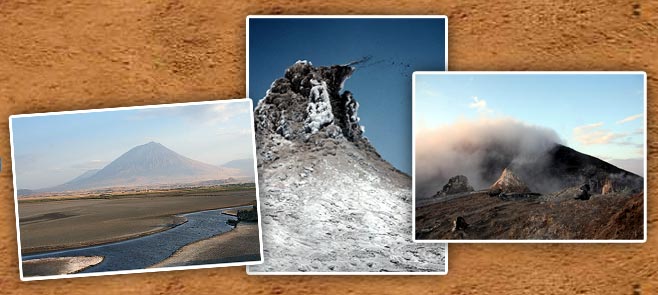South of Lake Natron in the eastern rift valley of North Tanzania, lies Mount Ol Doinyo L'engai (locally regarded as the sacred Mountain of God in the Maa Language), an active volcano. At 2878meters, Mt. Lengai is the only known volcano in the world that sometimes erupts natrocarbonatite lava, a highly fluid lava that contains almost no silicon. Natrocarbonatite lava (most fluid lava) is also much cooler than other lavas. During the day most of this lava flows look like fluid black oil. Some feel the lava flows resemble mud like-flows. Natrocarbonatite lava turns white when in contact with moisture. During rainy periods, the lava turns white almost immediately whilst this whitening takes longer during the dry periods.
|
 |
Mount Ol Doinyo Lengai also has phases of explosive activity during which the composition of the lava may contain much more silicate material. With this type of eruption, initial phases of the eruption may include strong lava fountains but usually there is no fluid lava and ash eruptions accompanied by ejection of rocks and explosions occurs. The two most recent eruptions of this type occurred during 1966-1967 and 2007-2008. Almost without fail, about every seven years Lengai erupts and plumes of smoke billow out of the crater. At other times it is possible to walk down into the crater, almost to the edge of the molten lava flows.
Views in the north from its summit crater lies the hot barren salt flats of Lake Natron stretch into the distance, beyond lies the Kenyan border. The day temperatures by the lake often exceed 40°C and a few animals survive here with the flamingo making its home here as breeding grounds, nesting on the salty surface on upraised mounds. The view on the east is dominated by Mt Kilimanjaro and to the west the forested escarpments and hills comprising the western slopes of the Great African Rift Valley. |